Spiti Tour Package From Delhi
Published on March 20, 2025
Introduction
Spiti Tour Package : Nestled in the Trans-Himalayan region of Himachal Pradesh, Spiti Valley is an adventurer's paradise. With its rugged landscapes, ancient monasteries, and untouched beauty, this cold desert attracts travelers seeking serenity and thrill alike. Whether you're looking for a Spiti Tour Package filled with cultural exploration or an adrenaline-pumping Spiti Valley Adventure, this guide will provide all the details you need to plan the perfect journey.
Why Choose a Spiti Valley Tour Package?
A Spiti Valley Tour Package offers a hassle-free way to explore this remote region, ensuring that you don’t miss out on its wonders. From transportation to accommodations and guided sightseeing, these packages cater to travelers of all kinds—be it solo travelers, families, or groups of adventure enthusiasts.
Some of the major highlights of a Spiti Tour Package include:
-
Monastery Visits: Key Monastery, Tabo Monastery, and Dhankar Monastery.
-
Scenic Drives: Enjoy breathtaking roads along Kunzum Pass, Chandratal Lake, and Pin Valley.
-
Trekking Opportunities: Experience the best of Spiti Valley Trekking with trails like the Pin-Parvati Pass and Chandratal Trek.
-
Camping and Adventure: If you love the thrill of nature, opt for Spiti Valley Adventure packages that include camping under the stars.

Best Time to Visit Spiti Valley: Season-Wise Breakdown
Summer (May to September): The Peak Tourist Season
The summer months from May to September are considered the best time for a Spiti Valley Tour. With pleasant temperatures ranging from 15°C to 25°C, the roads from both Manali and Shimla remain open, making travel convenient. This is the ideal season for sightseeing, trekking, and adventure sports.
Why Visit Spiti Valley in Summer?
-
Road Accessibility: Both the Manali and Shimla routes are open, making it easy to explore Spiti.
-
Ideal Weather: The days are warm, and the nights are cool, perfect for outdoor activities.
-
Best for Trekking: If you love trekking, this is the time to embark on Spiti Valley Trekking trails like the Pin-Parvati Pass, Chandratal Trek, and Dhankar Lake Trek.
-
Cultural Festivals: Attend local festivals like the Ladarcha Fair and monastery celebrations.
-
Camping at Chandratal: The famous Chandratal Lake remains accessible, and camping under the starlit sky is a magical experience.
Recommended Spiti Tour Packages for Summer
-
Classic Spiti Valley Tour Package: Covers Kaza, Key Monastery, Dhankar, and Chandratal.
-
Spiti Valley Adventure Package: Includes trekking, river rafting, and mountain biking.
-
Spiti Valley Trekking Package: Features the best trekking routes, including Langza and Pin Valley.
Monsoon (July to August): A Risky Yet Beautiful Season
Spiti receives minimal rainfall compared to other parts of Himachal Pradesh, making it possible to travel even during the monsoon. However, landslides are common on the Shimla route, making the Manali route a better choice during this time.
Why Visit Spiti Valley in Monsoon?
-
Fewer Tourists: Experience the serene beauty of Spiti without the crowds.
-
Lush Greenery: While Spiti remains a cold desert, the surrounding valleys come alive with greenery.
-
Great for Photography: The monsoon adds a dramatic touch to the landscapes, perfect for photographers.
Challenges of Monsoon Travel
-
Risk of Landslides: The roads from Shimla may become inaccessible due to landslides.
-
Limited Camping Options: Rain can make camping tricky, especially near Chandratal.
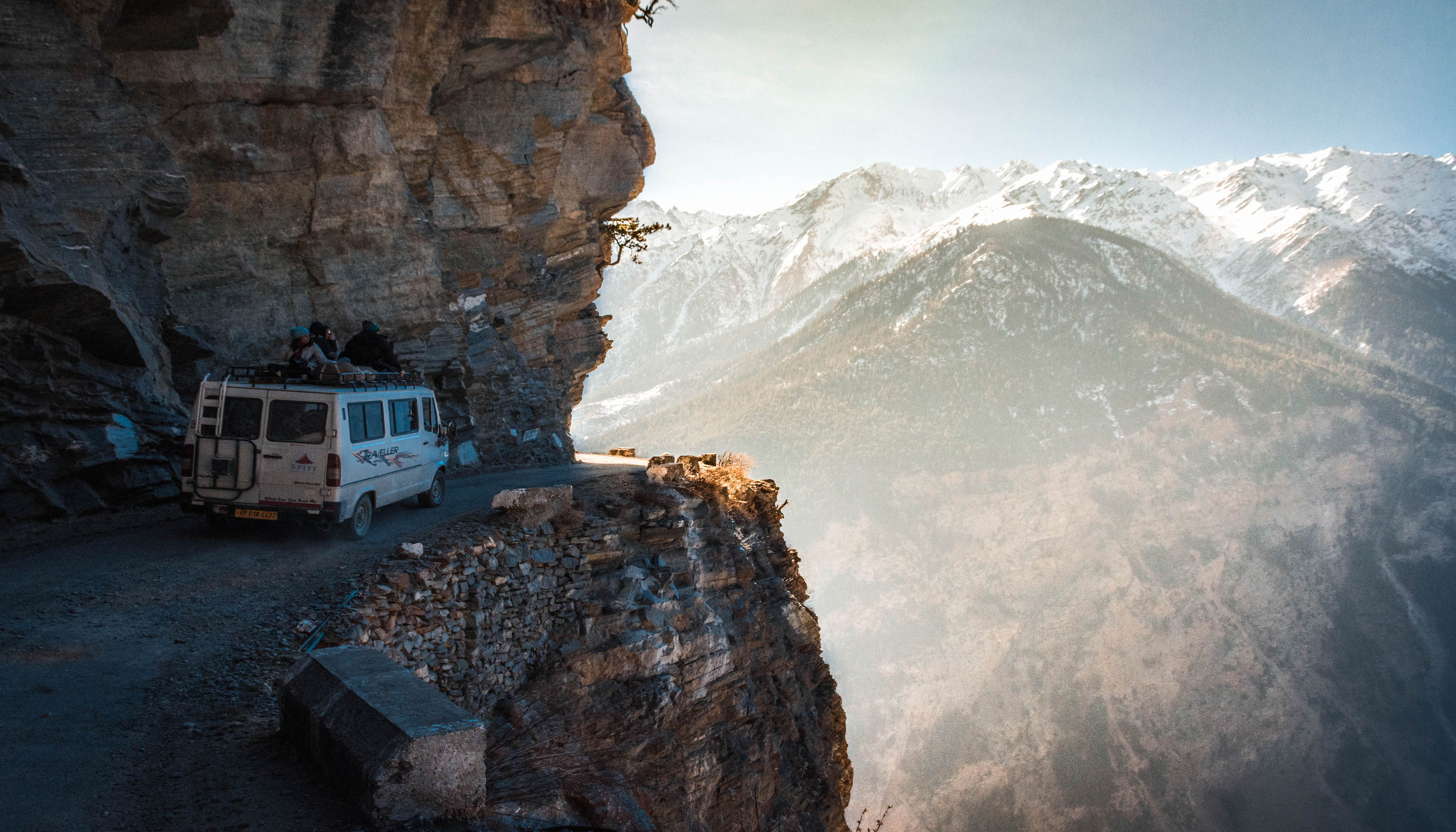
Autumn (September to October): The Best Season for a Peaceful Trip
Autumn is one of the most underrated seasons to visit Spiti. The weather remains pleasant, with temperatures ranging between 5°C and 20°C, making it an excellent time for Spiti Valley Travel.
Why Visit Spiti Valley in Autumn?
-
Post-Monsoon Beauty: The landscapes are clearer, and the skies are deep blue, making it a photographer’s paradise.
-
Perfect for Trekking: Trails are in excellent condition after the monsoon, making it an ideal time for Spiti Valley Trekking.
-
Affordable Packages: With fewer tourists, many travel operators offer discounts on Spiti Tour Packages.
Recommended Activities in Autumn
-
Trekking and Hiking: Enjoy hikes to Key Monastery, Dhankar Lake, and Langza village.
-
Explore High-Altitude Villages: Visit Komic, Hikkim, and Langza without the summer crowds.
-
Spiti Valley Adventure: Try mountain biking and off-roading during this time.
Winter (November to April): A Snowy Wonderland for the Brave
Winter in Spiti is for the daring. Temperatures drop as low as -20°C, and the valley gets covered in snow. Only the Shimla route remains open, as the Manali route closes due to heavy snowfall.
Why Visit Spiti Valley in Winter?
-
Snow-Covered Landscapes: Experience Spiti’s magical transformation into a winter wonderland.
-
Frozen Rivers and Lakes: Chandratal freezes into a breathtaking sheet of ice.
-
Less Tourism: If you want to experience Spiti’s true solitude, winter is perfect.
-
Snow Leopard Expedition: Winter is the best time for spotting the elusive snow leopard in Pin Valley National Park.
Challenges of Winter Travel
-
Extreme Cold: With temperatures dropping to -20°C, proper winter gear is essential.
-
Limited Accommodation: Many homestays and hotels shut down due to extreme weather.
-
Restricted Travel Routes: The only way to enter Spiti is via the Shimla route.
Recommended Spiti Tour Packages for Winter
-
Winter Snow Expedition: A thrilling adventure for those who love snow-covered landscapes.
-
Snow Leopard Expedition Package: Perfect for wildlife photographers and nature enthusiasts.
-
Winter Cultural Tour: Experience life in Spiti during the harsh winter months

Popular Spiti Valley Tour Packages
1. Classic Spiti Valley Tour Package (7-10 Days)
This itinerary covers all the major attractions, including Kaza, Key Monastery, Tabo, Dhankar, and Chandratal Lake.
2. Spiti Valley Trekking Package
For trekking lovers, this tour includes the famous Pin-Parvati Pass trek, Langza trek, and hikes to local villages.
3. Spiti Valley Adventure Tour
Perfect for thrill-seekers, this package includes river rafting, camping, and off-roading experiences across the rugged terrain of Spiti.
4. Spiti Valley Cultural and Monastery Tour
This tour focuses on the rich Tibetan Buddhist heritage of the region, taking you through centuries-old monasteries, local villages, and cultural experiences.
Must-Visit Places in Spiti Valley
Spiti Valley, a mesmerizing cold desert in Himachal Pradesh, is a paradise for travelers seeking breathtaking landscapes, ancient monasteries, and thrilling adventures. Whether you are exploring on a Spiti Tour Package or venturing on your own, this mystical valley has countless gems waiting to be discovered. From high-altitude lakes to ancient villages, here’s a comprehensive guide to the must-visit places in Spiti Valley.
Key Monastery – The Spiritual Heart of Spiti
Key Monastery, also known as Ki Gompa, is the largest and oldest monastery in Spiti Valley. Perched at an altitude of 4,166 meters, this 1000-year-old Tibetan Buddhist monastery offers a surreal view of the Spiti River and surrounding mountains. Travelers on a Spiti Valley Tour often consider this monastery a spiritual retreat where they can meditate and immerse in Buddhist culture.
Highlights:
-
Home to ancient murals and manuscripts
-
Spectacular views of the valley
-
A place to experience monastic life
Chandratal Lake – The Moon Lake
One of the most mesmerizing spots in Spiti Valley, Chandratal Lake is a high-altitude lake located at 4,300 meters. The name “Chandratal” means “Moon Lake” due to its crescent shape. The changing colors of the lake from turquoise blue to emerald green make it a photographer’s paradise.
Best Time to Visit: June to September
Things to Do:
-
Camping: Spend a night under the starry sky for a truly magical experience.
-
Trekking: A must for those on a Spiti Valley Trekking adventure.
-
Photography: Capture the reflections of the mighty Himalayas in the pristine waters.

Tabo Monastery – The Ajanta of the Himalayas
Tabo Monastery, established in 996 AD, is one of the oldest continuously functioning Buddhist monasteries in India. Often referred to as the “Ajanta of the Himalayas” due to its ancient murals and frescoes, this monastery is an important cultural and spiritual site.
Why Visit?
-
Houses ancient Buddhist scriptures and thangkas
-
Offers a tranquil environment for meditation
-
A key stop in any Spiti Valley Travel itinerary
Pin Valley National Park – A Wildlife Enthusiast’s Paradise
For nature and wildlife lovers, Pin Valley National Park is a must-visit. Home to the elusive snow leopard, Himalayan ibex, and Tibetan gazelle, this national park is a hidden gem for Spiti Valley adventurers.
Things to Do:
-
Wildlife spotting
-
Trekking through picturesque landscapes
-
Exploring remote villages within the park

Hikkim – The World’s Highest Post Office
Imagine sending a postcard from the world’s highest post office! Hikkim, situated at 4,400 meters, is home to this unique postal facility where travelers can mail letters and souvenirs to loved ones.
Experience:
-
Send a postcard as a travel souvenir
-
Interact with locals in one of the highest villages in India
-
An essential stop on your Spiti Valley Adventure
Komic – The Highest Motorable Village in Asia
Komic Village, located at 4,587 meters, holds the title of the highest motorable village in Asia. The village offers mesmerizing views, a rare Buddhist monastery, and a peaceful environment for travelers.
Why Visit?
-
Visit Tangyud Monastery, one of the highest monasteries in the world
-
Experience life in one of the highest inhabited villages
-
A perfect addition to your Spiti Valley Tour Package
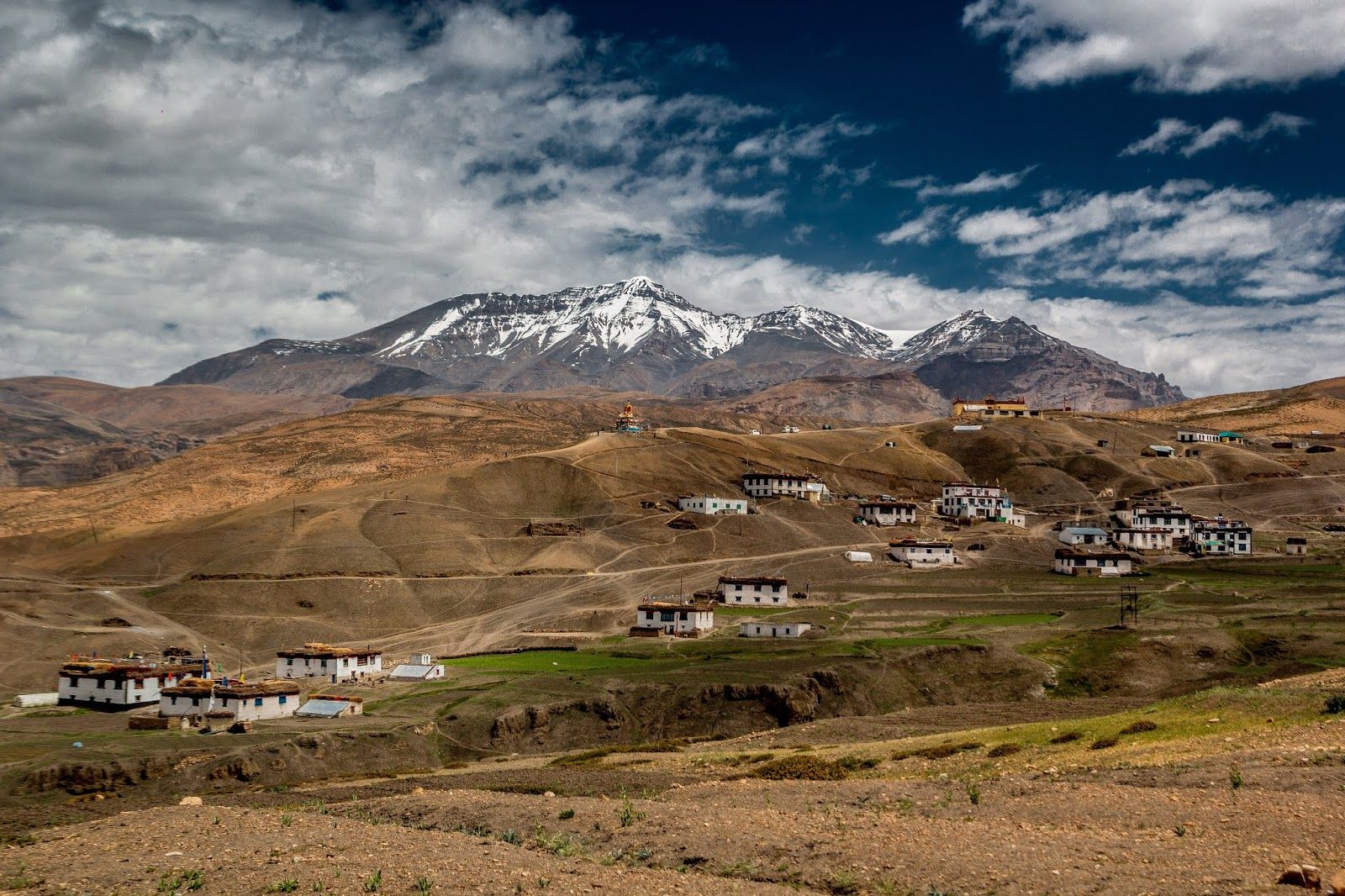
Langza – The Fossil Village
Langza is famous for its stunning Buddha statue overlooking the valley and its rich fossil reserves. The village was once submerged underwater, and fossils of marine creatures can still be found here.
What to Do?
-
Hunt for fossils
-
Enjoy panoramic views of Chau Chau Kang Nilda peak
-
Interact with warm and welcoming locals
Dhankar Monastery – A Monastery in the Clouds
Perched dramatically on a cliff overlooking the confluence of the Spiti and Pin rivers, Dhankar Monastery is one of the most stunning monasteries in Spiti Valley. The location, history, and spiritual significance make it an unmissable destination.
Best Activities:
-
Trek to Dhankar Lake, a hidden gem near the monastery
-
Explore the ancient murals and scriptures inside the monastery
-
Absorb the breathtaking views of the surrounding mountains
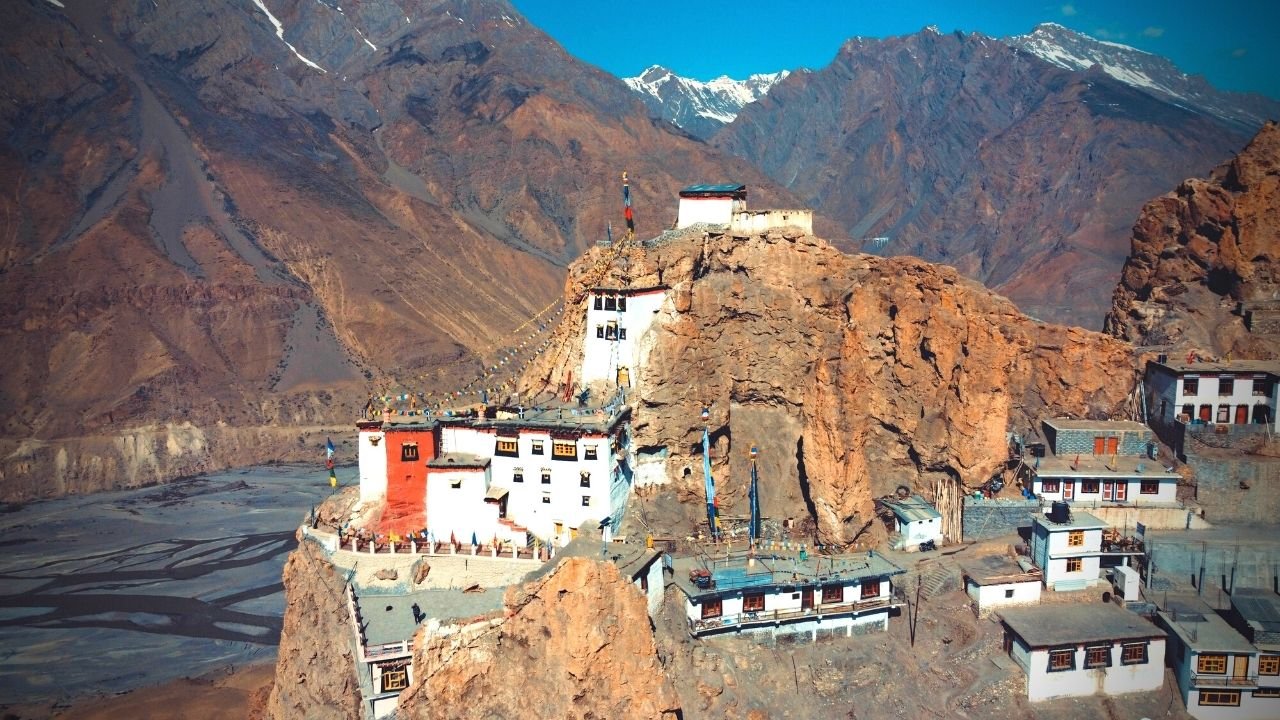
Lhalung Monastery – The Golden Temple of Spiti
Lhalung Monastery, also known as the “Golden Temple,” is an ancient monastery adorned with golden murals and intricate paintings. This lesser-known monastery provides a serene escape from the more touristy locations.
Why Visit?
-
Experience a lesser-explored Buddhist site
-
Witness intricate paintings and sculptures
-
Enjoy the peaceful atmosphere
Gue Mummy Stupa – India’s Only Natural Mummy
One of the most mysterious attractions in Spiti Valley, the Gue Mummy Stupa houses the well-preserved 500-year-old mummy of a Buddhist monk. Discovered in a remote village near the Indo-Tibetan border, this mummy has naturally mummified due to the region’s dry climate.
Reasons to Visit:
-
See a naturally mummified monk in a seated posture
-
Discover one of India’s most unique and rare historical sites
-
A fascinating experience for history enthusiasts

Kunzum Pass – The Gateway to Spiti
At an altitude of 4,590 meters, Kunzum Pass serves as the gateway to Spiti Valley from Lahaul. The pass offers some of the most spectacular panoramic views of the Himalayas.
Activities:
-
Stop at the Kunzum Devi Temple to seek blessings before entering Spiti
-
Enjoy breathtaking views of Bara Shigri Glacier
-
A must-stop point for travelers on a Spiti Tour Package
Nako Village – A Hidden Gem
Nako, a beautiful high-altitude village, is known for its stunning lake, ancient monastery, and traditional Spitian houses. Located near the Tibet border, this village provides a glimpse into authentic Spiti culture.
Things to Do:
-
Visit Nako Lake and enjoy the tranquility
-
Explore Nako Monastery and its ancient murals
-
Experience the simple life of Spitian villagers
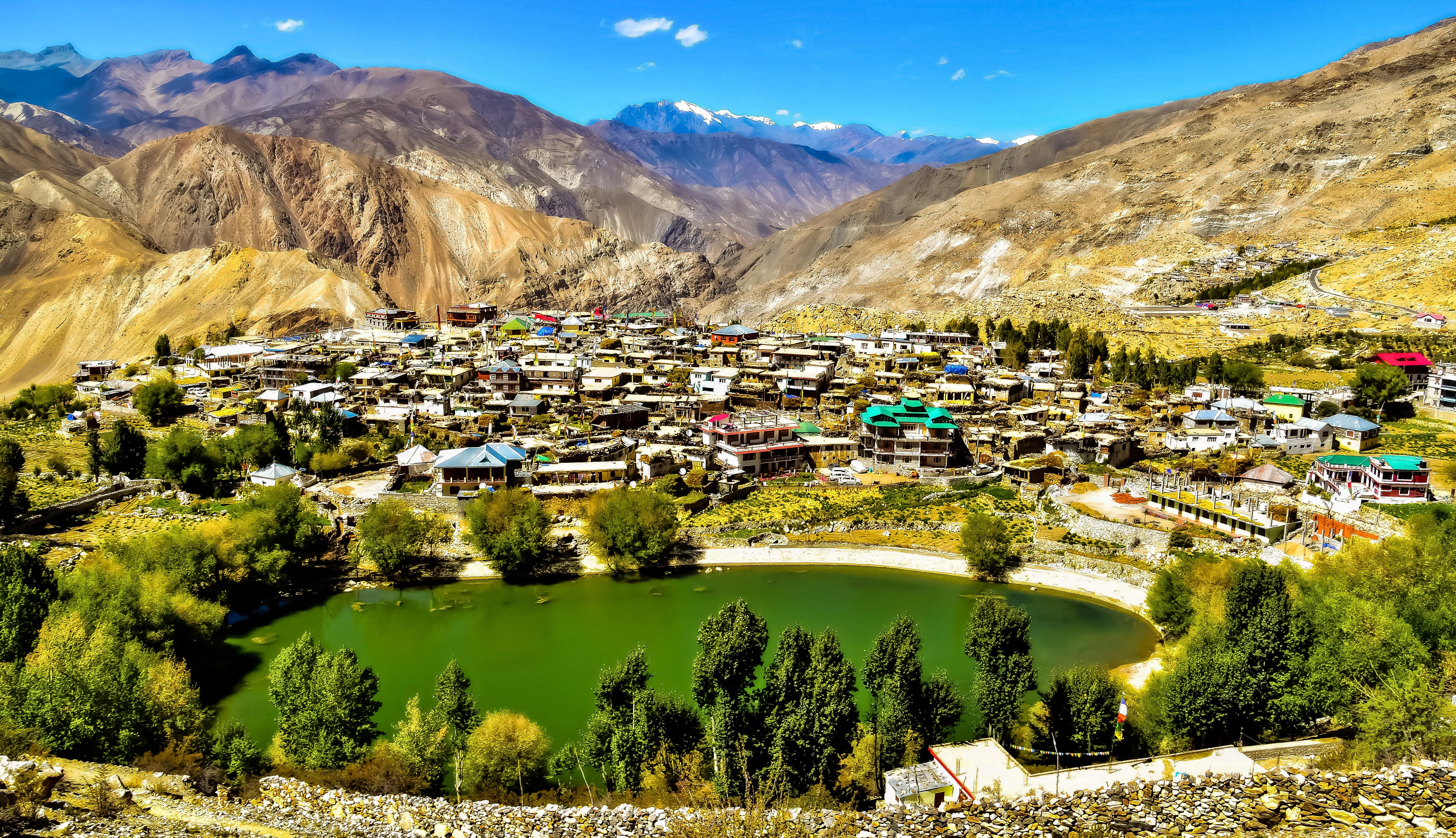
Tashigang – A Remote Wonder
If you’re looking for an offbeat experience in Spiti Valley Travel, Tashigang is an ideal destination. Located near the Tibetan border, this remote village offers stunning landscapes and a deep cultural experience.
Highlights:
-
One of the least explored villages in Spiti
-
Breathtaking views of snow-clad peaks
-
A great spot for travelers seeking solitude
Adventure Activities in Spiti Valley
If you're looking for an adrenaline rush, Spiti Valley Adventure packages offer a range of thrilling activities:
-
Trekking: Experience Spiti Valley Trekking trails like the Pin-Parvati Pass, Chandratal Trek, and Parang La Trek.
-
River Rafting: Enjoy rafting in the Spiti River with mesmerizing Himalayan landscapes.
-
Camping: Spend nights under the starlit sky near Chandratal or in the high-altitude villages.
-
Mountain Biking: Ride through rugged terrains for an exhilarating experience.
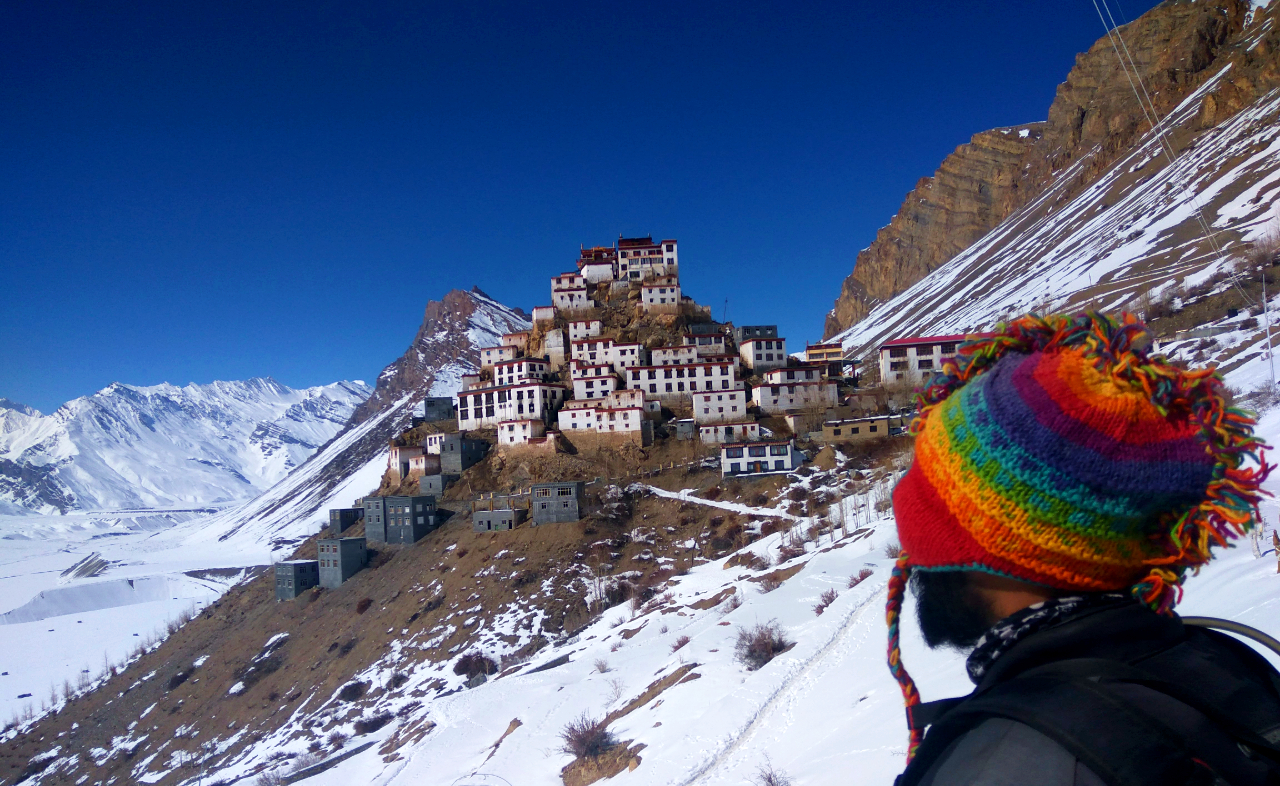
How to Reach Spiti Valley
Spiti Valley can be accessed via two main routes:
-
Via Manali: The shortest and most scenic route via Rohtang Pass and Kunzum Pass.
-
Via Shimla: A longer but all-weather route via Kinnaur Valley, offering lush green landscapes.
Essential Travel Tips for Spiti Valley
Acclimatization and Altitude Sickness
Spiti Valley is situated at a high altitude (12,500 ft), which can cause altitude sickness. Here’s how to tackle it:
-
Take it slow; avoid rushing your itinerary.
-
Hydrate well and avoid alcohol in the first few days.
-
Carry medicines like Diamox if needed.
-
Spend a day acclimatizing in a mid-altitude location like Kalpa or Kaza before heading further.
Permits and Documentation
Foreign nationals require an Inner Line Permit to visit certain areas in Spiti Valley. Indian travelers do not need a permit, but carrying identification proof is mandatory.
Packing Essentials
Your packing list will depend on the season of travel, but some must-haves include:
-
Clothing: Layered clothing, thermals, gloves, and windproof jackets.
-
Footwear: Sturdy trekking shoes for Spiti Valley Trekking.
-
Medical Kit: Altitude sickness medicine, painkillers, and basic first aid.
-
Gadgets: Power banks, extra batteries, and a high-resolution camera for capturing the beauty of Spiti Valley.
-
Documents: Copies of ID proof, travel insurance, and necessary permits.
Road Conditions and Travel Routes
Spiti Valley is accessible via two major routes:
-
Shimla-Kinnaur Route: Open throughout the year, this route is preferred for a gradual ascent and better acclimatization.
-
Manali Route: Generally open from mid-June to October, offering a more adventurous journey with high-altitude passes.
The roads can be treacherous, so it is essential to:
-
Drive carefully and avoid night travel.
-
Check weather and road conditions before departure.
-
Opt for a 4x4 vehicle for a smoother ride.
Accommodation Options
Accommodation ranges from homestays to luxury hotels. Booking in advance is recommended during peak season. Homestays provide an authentic cultural experience and an opportunity to interact with locals.
Food and Dining in Spiti Valley
While exploring Spiti Valley, try local delicacies such as:
-
Thukpa and Momos: Popular Tibetan dishes.
-
Butter Tea: A staple drink in high-altitude regions.
-
Chhang: A traditional barley beer enjoyed by locals.
-
Yak Cheese: Found in select areas, offering a unique taste.
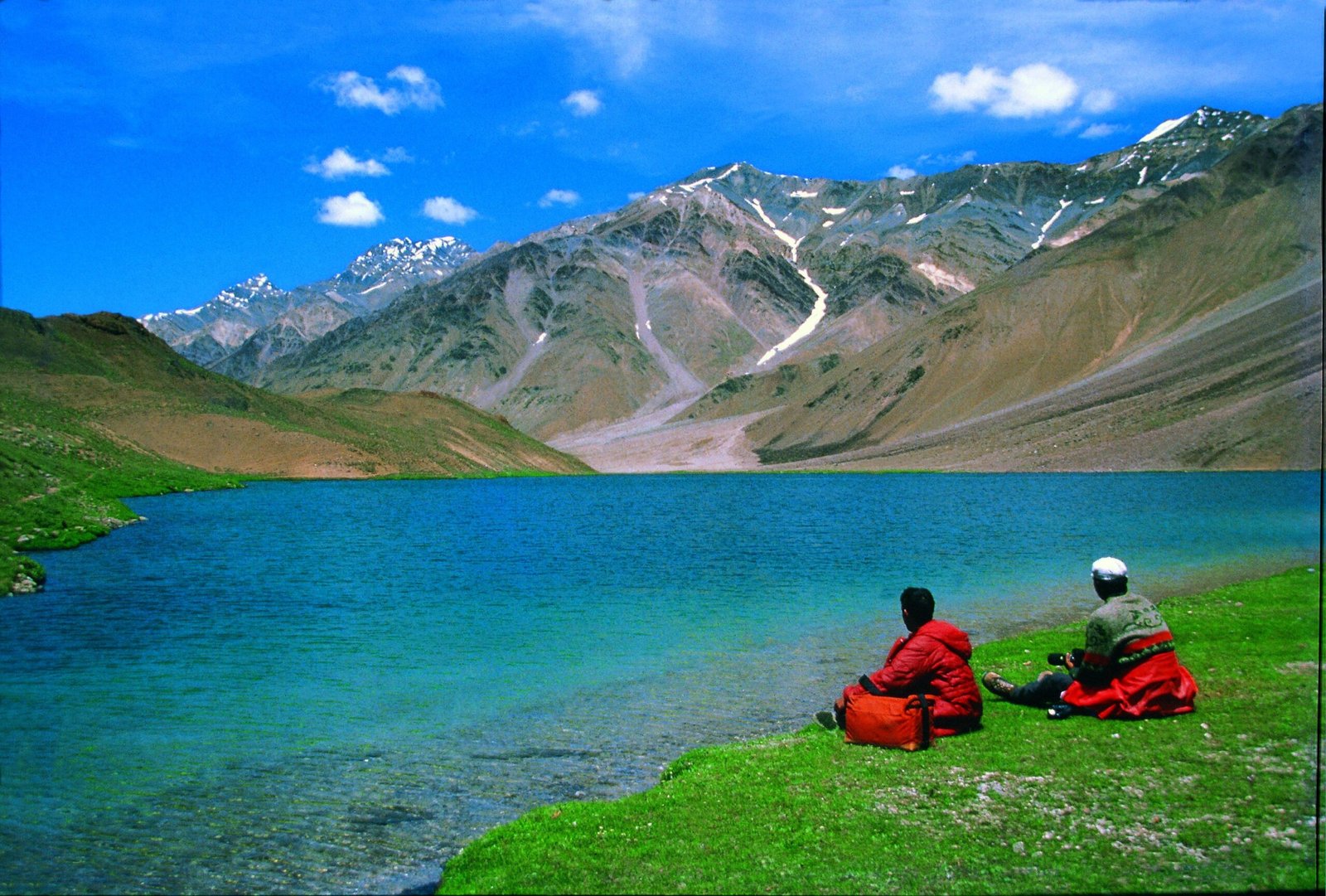
Frequently Asked Question(FAQ)
What is included in the Spiti Tour Package From Delhi?
Our Spiti Tour Package From Delhi includes transportation, accommodation, meals, sightseeing, permits, and a guided tour to all major attractions in Spiti Valley.
What is the best time to book a Spiti Tour Package From Delhi?
The best time to visit Spiti is from May to October when the roads are open and the weather is pleasant. However, winter tours are also available for adventure seekers.
How many days are required for a complete Spiti Valley tour?
A typical Spiti Tour Package From Delhi lasts around 7 to 10 days to cover major destinations like Kaza, Tabo, Key Monastery, Chandratal Lake, and Dhankar.
Is Spiti Valley suitable for a family trip?
Yes, Spiti Valley is an excellent destination for families who love nature and adventure. However, it’s essential to consider altitude acclimatization, especially for kids and elderly travelers.
What are the accommodation options in the Spiti Tour Package From Delhi?
The package includes stays in guesthouses, hotels, and homestays in locations like Kaza, Tabo, and Pin Valley, offering comfortable and authentic Himalayan experiences.
Is Spiti Valley accessible during winter?
Yes, but accessibility depends on weather conditions. Winter travel to Spiti is challenging but rewarding, with breathtaking snowy landscapes. Ensure proper preparation for extreme cold.
What kind of food is available during the tour?
Spiti offers a mix of Indian, Tibetan, and local cuisine, including momos, thukpa, rajma chawal, and butter tea. Vegetarian options are widely available in most places.
How is the road journey from Delhi to Spiti Valley?
The road trip covers approximately 750 km and takes around 15-18 hours. Routes via Shimla or Manali offer breathtaking views but require careful planning due to terrain conditions.
Are there any permits required for visiting Spiti Valley?
Indian citizens do not need permits, but foreign travelers require Inner Line Permits to visit certain areas near the Indo-Tibetan border, which can be arranged in Kaza or Manali.
What adventure activities can be included in the Spiti Tour Package From Delhi?
The tour can include trekking, camping, river rafting, monastery visits, and wildlife exploration. Chandratal Lake, Pin Valley, and Dhankar Monastery are must-visit adventure spots.
